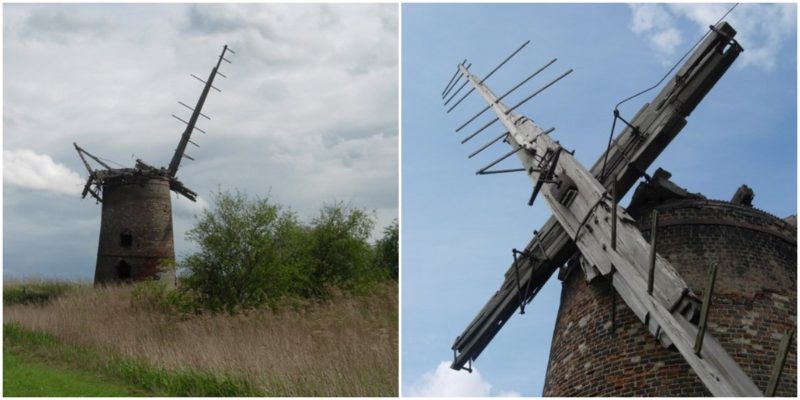Throughout the years, Brograve Mill has been engaged in a constant battle with atmospheric conditions and the passage of time. According to local legend, it even survived a fierce attack by the Devil himself.
Every scar inflicted on the mill tells a story about its past. Many stories have been lost in time and remain to be explored through the imagination but others are backed up by evidence. In most cases, myth and reality are fused together, building a picture of the mill’s past. Today a lonely red brick structure, Brograve Mill is only a ghostly reminder of its former glory.
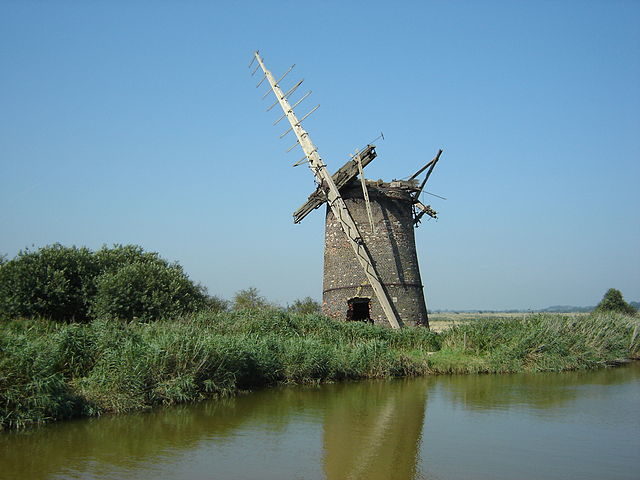
The drainage windpump mill stands in the timeless, peaceful environment of Brograve level in the parish of Sea Palling in England’s Norfolk Broads National Park. Its derelict state serves as a symbol that nothing in this marshy and tidal landscape lasts forever.
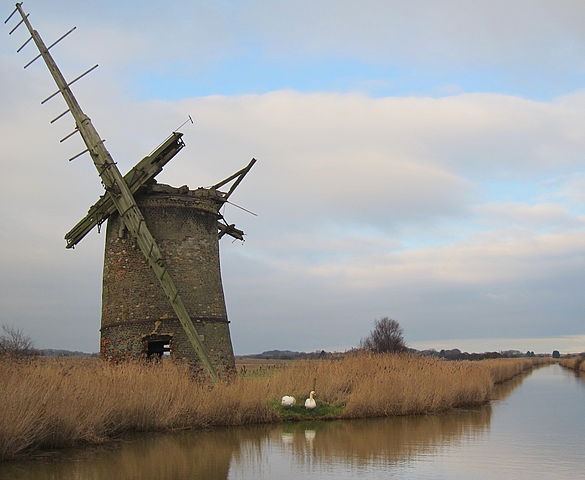
The mill was erected in an attempt to take back land that was swallowed by the sea. It was built in 1771 by Sir Berney Brograve, 1st Baronet, and new interior machinery (a brake wheel, octagonal wind shaft, and an internal turbine) was added at the beginning of the 19th century.
It had a boat-shaped top with a petticoat and an 8-bladed wooden fantail with a tailpole. Four sails gave power to the internal turbine, to drain the Brograve levels into the man-made Waxham New Cut. Lambridge Mill was built nearby for the same purpose, and also stands in a derelict condition today.
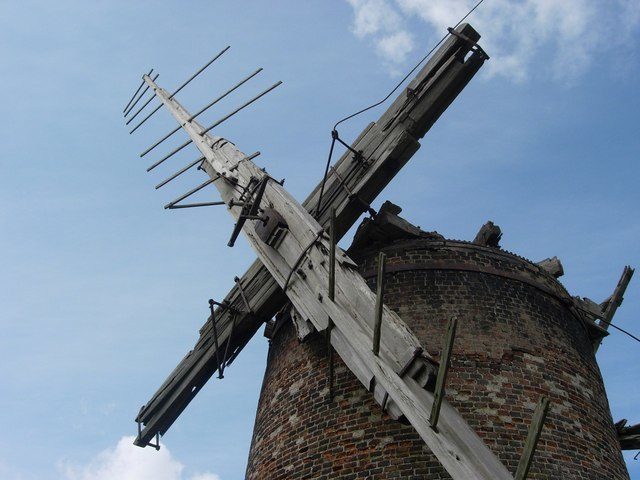
Sir Brograve inherited the land from his wealthy relatives. He was also the owner of Waxham Hall and the manors of Sea Palling and Horsey. His wealth depended on his land, but his land was often hit by floods and erosion: a constant source of trouble to the low-lying fields along the coast.
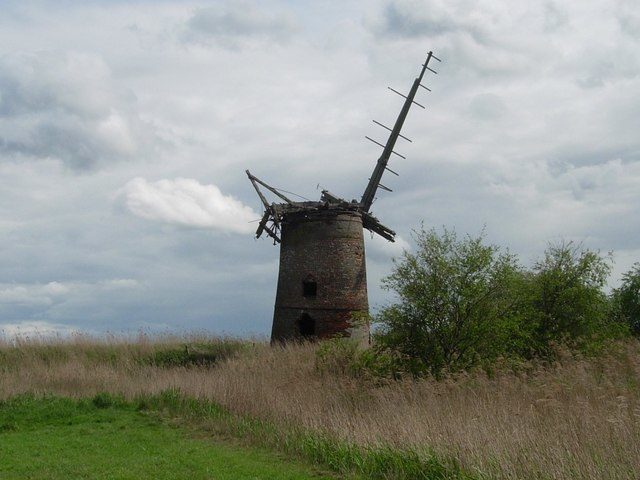
At the time, Brograve was one of the most well-known people in Norfolk and it is not surprising that there are many stories and legends surrounding him. The locals believed that Sir Brograve had made an agreement with the Devil and sold his soul to him — but had no intention to fulfill his promises.
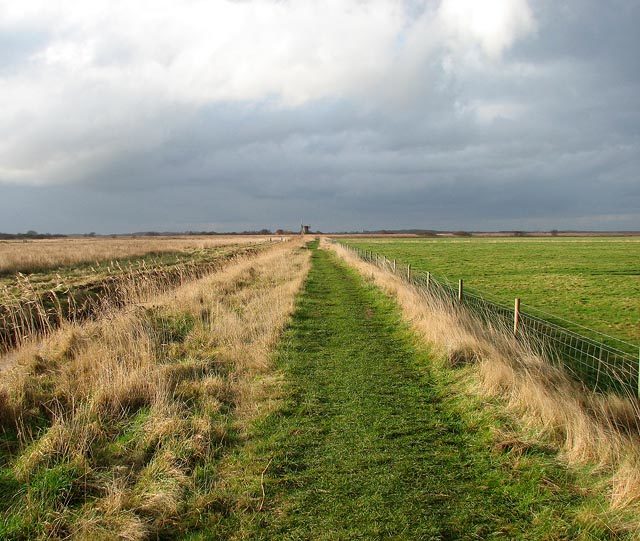
The legend continues that on a dark and stormy night, Brograve was trying to escape from the angry Devil and hid in the mill. The Devil couldn’t enter and battered furiously on the door with his hooves.
The next morning when Brograve went outside, he saw that the door was covered in hoof prints and that the mill tower had been moved from its foundations. It now leaned towards the west.
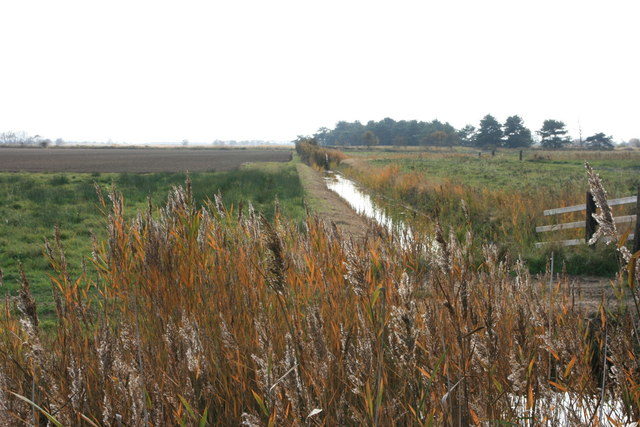
Perhaps the Devil disagreed with the draining of the land. Archaeological discoveries showed that the mill was strengthened five times because it had subsided in five different spots, but continued to sink and tilt towards the west, i.e. the direction in which the Devil had tried to knock the mill down.
It was locally referred to as “the Devil’s Mill” and some believed that the miller was a necromancer who practiced dark magic.
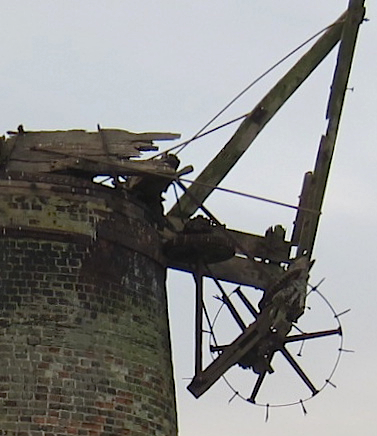
The mill stopped working at the beginning of the 1930s. Since then it has fallen into a dangerously fragile state, waiting for a storm to finally reduce it to rubble. In 2017, the machinery was opened to the elements and soon fell into a bad state of disrepair too. Today, the lonely monument serves only as a lookout point for resting cormorants, and as a reminder of the ongoing battle between man and sea.
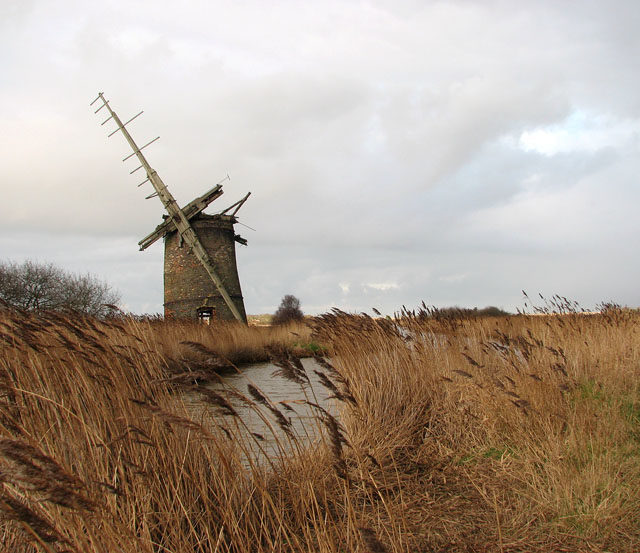
The picturesque shell of the once-magnificent windmill can’t reached by foot, although it can be enjoyed from a distance from the muddy path along the Waxham New Cut. Only two stocks and two stubs from the sails remain.
The slight westward tilt of the collapsing tower remains a distinct feature. Some believe that Sir Berney Brograve was cursed by the Devil to wander forever on the land and that his ghost haunts the mill, especially on stormy nights.
